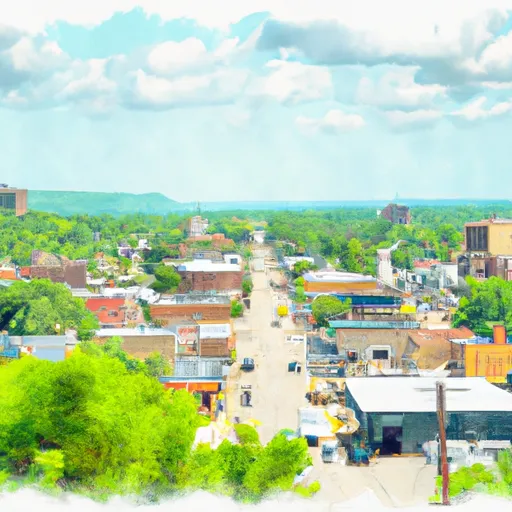-
 Snoflo Premium
Snoflo Premium
Get unlimited access to all our content
With no Ad interruptions! - Start Your Free Trial Login with existing account
Monticello
Eden Index
Climate
7.4
•
Recreation
4.2
•
Community
2.0
•
Safeguard
4.9/10

Monticello, Arkansas is a charming city located in Drew County. It experiences a humid subtropical climate with hot, humid summers and mild winters. Summers are characterized by temperatures ranging from the mid-80s to low 90s Fahrenheit, while winters are milder with average temperatures in the 40s and 50s. Rainfall is evenly distributed throughout the year, with an average annual precipitation of about 54 inches.
Monticello is surrounded by natural beauty and offers various outdoor recreation opportunities. The area is renowned for its pristine water bodies, including Lake Monticello, which spans over 1,520 acres and offers excellent fishing and boating experiences. The Saline River, situated nearby, is also popular for canoeing, kayaking, and swimming.
For nature enthusiasts, the city boasts several parks and trails. The Drew Memorial Health System Walking Trail provides a scenic path for walking or jogging, while Lake Monticello Park offers picnic areas, a playground, and scenic views of the lake. Cane Creek State Park, located a short drive away, provides opportunities for camping, hiking, and wildlife viewing.
Overall, Monticello, Arkansas offers a pleasant climate, ample water resources, and diverse outdoor recreation activities for residents and visitors to enjoy.
What is the Eden Index?
The Snoflo Eden Index serves as a comprehensive rating system for regions, evaluating their desirability through a holistic assessment of climate health, outdoor recreation opportunities, and natural disaster risk, acknowledging the profound impact of these factors on livability and well-being.
Climate Health Indicator (CHI): 7.4
Monticello receives approximately
1372mm of rain per year,
with humidity levels near 90%
and air temperatures averaging around
17°C.
Monticello has a plant hardyness factor of
8, meaning
plants and agriculture in this region tend to thrive here all year round.
By considering the ideal temperature range, reliable water supplies, clean air, and stable seasonal rain or snowpacks, the Climate Health Indicator (CHI) underscores the significance of a healthy climate as the foundation for quality living.
A healthy climate is paramount for ensuring a high quality of life and livability in a region, fostering both physical well-being and environmental harmony. This can be characterized by ideal temperatures, reliable access to water supplies, clean air, and consistent seasonal rain or snowpacks.
Weather Forecast
Streamflow Conditions
Lower Ouachita
Area Rivers
Lower Ouachita
Snowpack Depths
Lower Ouachita
Reservoir Storage Capacity
Lower Ouachita
Groundwater Levels
Recreational Opportunity Index (ROI): 4.2
The Recreational Opportunity Index (ROI) recognizes the value of outdoor recreational options, such as parks, hiking trails, camping sites, and fishing spots, while acknowledging that climate plays a pivotal role in ensuring the comfort and consistency of these experiences.
Access to outdoor recreational opportunities, encompassing activities such as parks, hiking, camping, and fishing, is crucial for overall well-being, and the climate plays a pivotal role in enabling and enhancing these experiences, ensuring that individuals can engage in nature-based activities comfortably and consistently.
Camping Areas
| Campground | Campsites | Reservations | Toilets | Showers | Elevation |
|---|---|---|---|---|---|
| Chamois Access - MDC | 4 | 530 ft | |||
| Cypremort Point State Park | None | 3 ft | |||
| Trulock - Arkansas River | 15 | 195 ft | |||
| Graham Cave State Park | None | 778 ft | |||
| Lake Fausse Pointe State Park | None | 5 ft | |||
| Cane Creek State park | None | 257 ft | |||
| Rising Star | None | 196 ft | |||
| Rollins Ferry Access - MDC | 11 | 568 ft | |||
| Lakeview Park - Mexico | None | 810 ft | |||
| Chemin - A - Haut State Park | None | 125 ft |
Nearby Ski Areas
Catastrophe Safeguard Index (CSI):
The Catastrophe Safeguard Index (CSI) recognizes that natural disaster risk, encompassing floods, fires, hurricanes, and tornadoes, can drastically affect safety and the overall appeal of an area.
The level of natural disaster risk in a region significantly affects safety and the overall livability, with climate change amplifying these risks by potentially increasing the frequency and intensity of events like floods, fires, hurricanes, and tornadoes, thereby posing substantial challenges to community resilience and well-being.
Community Resilience Indicator (CRI): 2.0
The Community Resilience Indicator (CRI) recognizes that education, healthcare, and socioeconomics are crucial to the well-being of a region. The CRI acknowledges the profound impact of these elements on residents' overall quality of life. By evaluating educational resources, healthcare accessibility, and economic inclusivity, the index captures the essential aspects that contribute to a thriving community, fostering resident satisfaction, equity, and social cohesion.

